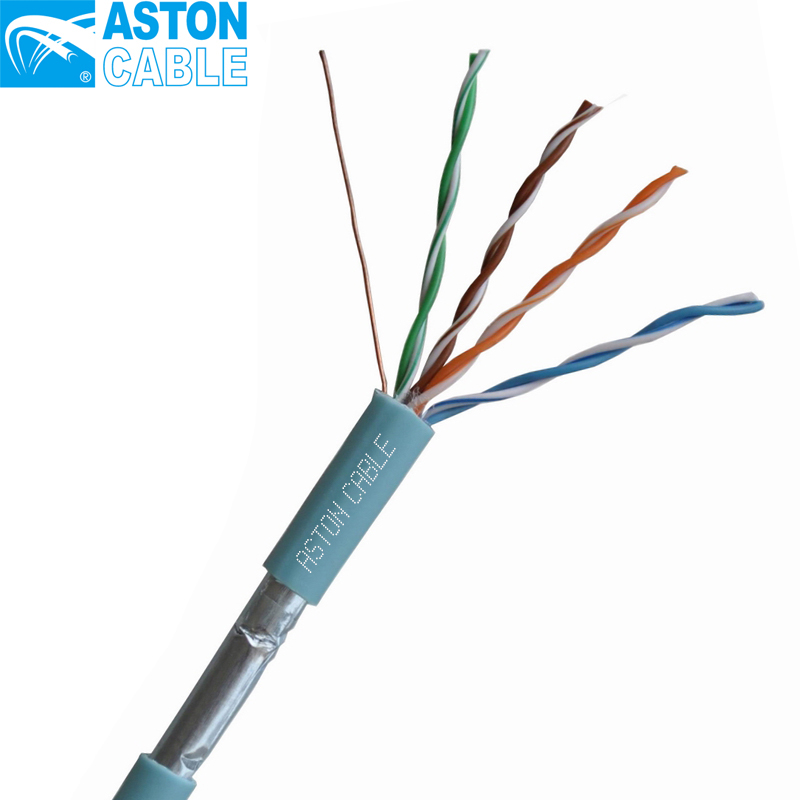Introduction to Ethernet Cables
In today's technology-driven world, Ethernet cables form the backbone of network infrastructure. Among them, the CAT5e and CAT6 cables are frequently discussed due to their widespread use and performance capabilities. Understanding their cost implications is vital for both consumers and businesses making purchasing decisions. So, is the CAT5e generally cheaper than the CAT6? This article explores this question in-depth, providing insights into their technical specifications, cost differences, performance, and future relevance.
Technical Specifications and Capabilities
● Understanding cat5e lan cable
Commonly used for networking purposes, the CAT5e LAN cable is an enhanced version of the CAT5. It is designed to reduce crosstalk and handle network speeds of up to 1 gigabit per second (Gbps) over distances of up to 100 meters. Its appeal lies in its affordability and sufficient performance for most residential and small business environments.
● Delving into CAT6 Specifications
The CAT6 cable, on the other hand, offers a higher bandwidth, supporting speeds up to 10 Gbps over shorter distances (up to 55 meters) and 1 Gbps for the standard 100-meter length. With improved shielding and tighter twists, it minimizes interference and provides better performance, making it suitable for environments with higher data transfer needs.
Cost Comparison of CAT5e and CAT6
● Initial Purchase Price
When considering the initial cost, CAT5e is typically cheaper than CAT6. Wholesale CAT5e LAN cables from manufacturers in China, such as Aston Cable, often come at a lower price point due to the materials used and the simpler manufacturing process. Pricing varies depending on the manufacturer and supplier, but CAT5e remains a budget-friendly option for basic networking needs.
● Long-Term Financial Implications
While CAT5e cables have a lower upfront cost, CAT6 cables may offer better value in the long term for businesses anticipating increased data demands. Investing in CAT6 could potentially save on future upgrades, providing a cost-effective solution as data needs grow.
Installation and Infrastructure Considerations
● Complexity of Installation
Both CAT5e and CAT6 cables are relatively straightforward to install. However, CAT6's improved shielding requires more precision during installation to ensure optimal performance. This might lead to slightly higher installation costs compared to CAT5e, which is generally easier to work with.
● Compatibility with Existing Systems
CAT5e LAN cables are fully compatible with most existing network systems, making them a convenient choice for upgrades or expansions. CAT6 cables, while backward compatible, require ensuring that other network components support the higher data rates and frequencies.
Performance and Future-Proofing
● Suitability for Current Technologies
Today, CAT5e is adequate for most home networks and small business environments where equipment doesn't exceed 1 Gbps. However, as data demands increase, especially with the rise of streaming, gaming, and IoT devices, CAT6's capabilities become more relevant.
● Preparation for Future Advancements
Choosing CAT6 can be seen as future-proofing your network infrastructure. With technology advancing rapidly, a CAT6 setup can handle higher speeds and bandwidths, reducing the need for near-future upgrades.
Use Cases and Application Scenarios
● Residential Versus Commercial Environments
For residential use, CAT5e is typically sufficient, providing reliable connectivity for standard internet usage. However, in commercial settings, where multiple devices require high-speed internet, CAT6 stands out for its superior performance.
● Specific Scenarios Favoring One Over the Other
In scenarios where budget constraints are a primary concern, and the network demands are modest, CAT5e is the practical choice. Conversely, environments that demand high-speed data transfer and future-ready infrastructure are better served by CAT6 cables.
Durability and Longevity
● Material Quality and Lifespan
Both cable types are designed to withstand regular use, but CAT6's enhanced sheathing makes it more robust against environmental factors. This translates to longer lifespan and less frequent replacements.
● Impact of Environmental Factors
External conditions, such as exposure to UV light and temperature variations, may affect cable longevity. CAT6's superior materials offer better resistance in challenging environments, providing peace of mind with long-term installations.
Market Trends and Availability
● Current Market Demand
The demand for CAT5e LAN cables remains steady due to their cost-effectiveness and adequacy for basic networking needs. Meanwhile, the market for CAT6 is growing, driven by increasing data requirements and technological advancements.
● Availability in Different Regions
Countries like China, known for large-scale manufacturing, provide an abundance of CAT5e and CAT6 LAN cables. Factories like those of Aston Cable cater to global demands, offering both options to suit varying customer needs.
Expert Opinions and Recommendations
● Insights from Industry Professionals
Industry experts often recommend weighing current needs against future requirements when choosing between CAT5e and CAT6. For environments with rapidly increasing data needs, investing in CAT6 provides better long-term value.
● Consumer Feedback and Experiences
Feedback from users often highlights CAT5e's affordability and satisfactory performance in less demanding environments. In contrast, those who have upgraded to CAT6 appreciate the enhanced speeds and reliability, particularly in data-intensive settings.
Conclusion: Balancing Cost and Needs
The question of whether CAT5e is cheaper than CAT6 can be answered with a straightforward yes in terms of initial costs. However, the decision involves considering long-term impacts, infrastructure requirements, and future readiness. Ultimately, the choice hinges on balancing immediate budgetary constraints against potential future data needs, ensuring that the selected option aligns with both current and anticipated requirements.
About Aston Cable
Aston Cable, located in Hangzhou Linan City, is a professional communication cable manufacturer with over 20 years of experience. The factory, covering 10,000 square meters, is equipped with advanced manufacturing and testing equipment. It produces a wide range of cables, including Coaxial, Composite, LAN, alarm, and security cables, with a daily production capacity of around 500km. Committed to enhancing customer satisfaction, Aston Cable continues to innovate and provide reliable solutions for data and security cable needs.
Post time: 2024-12-07 19:36:03





